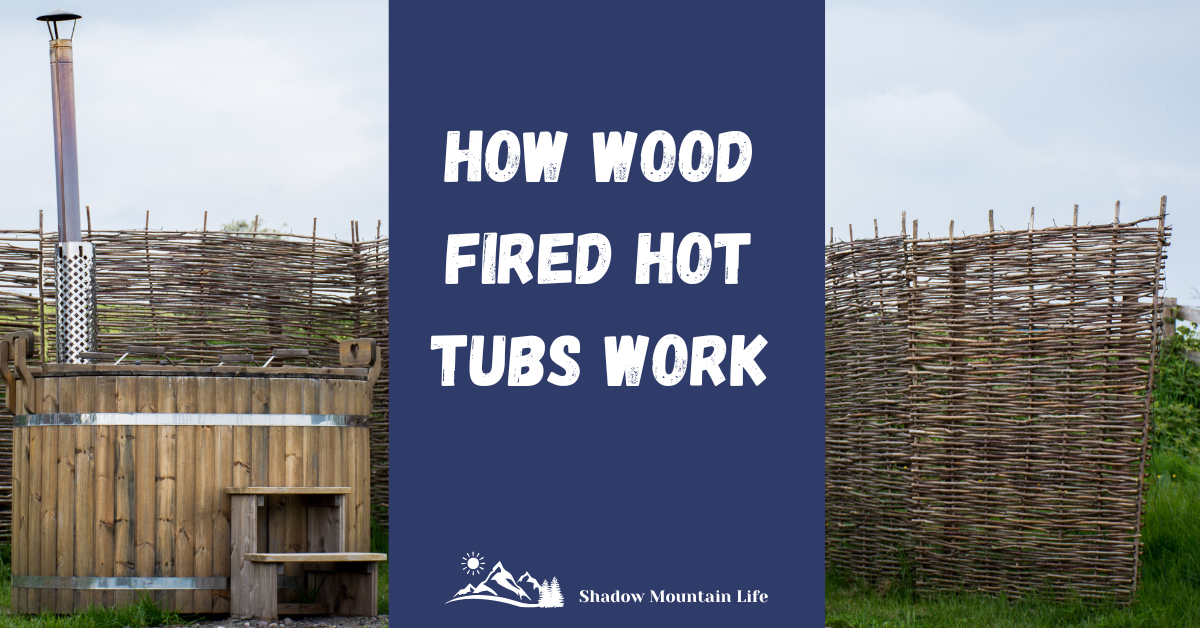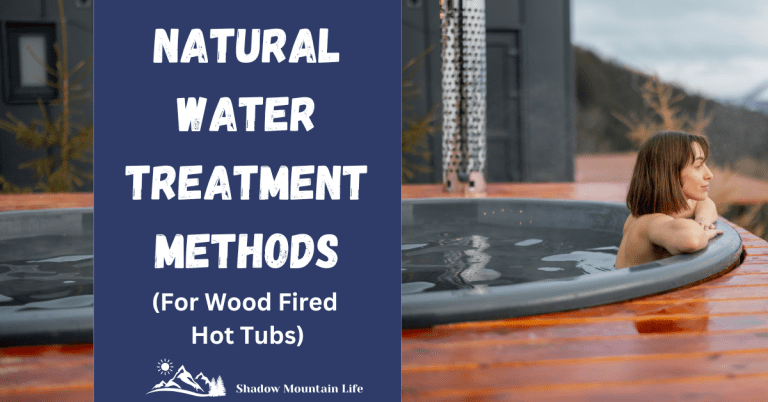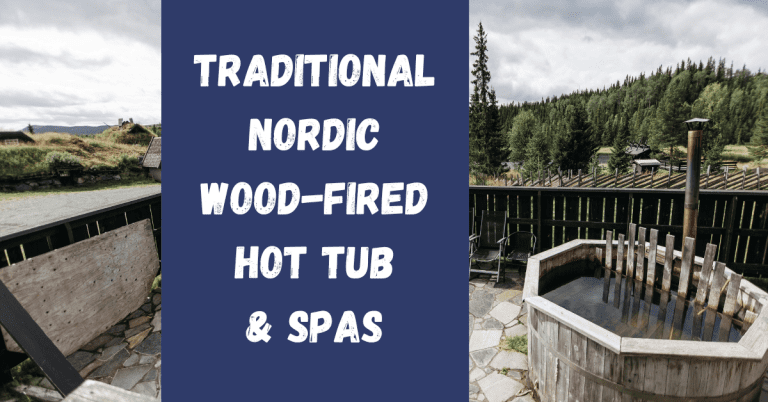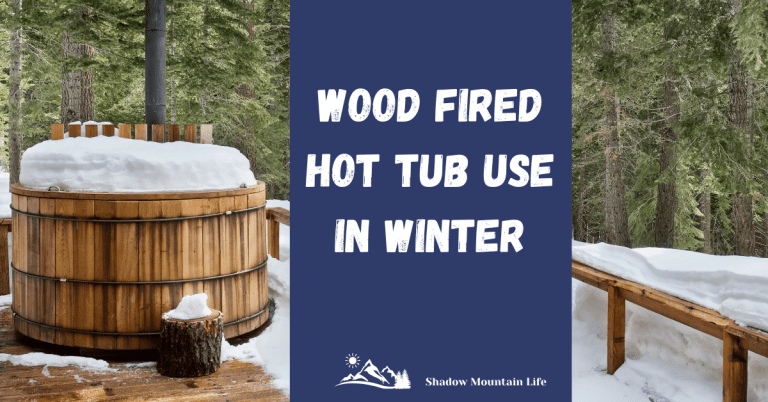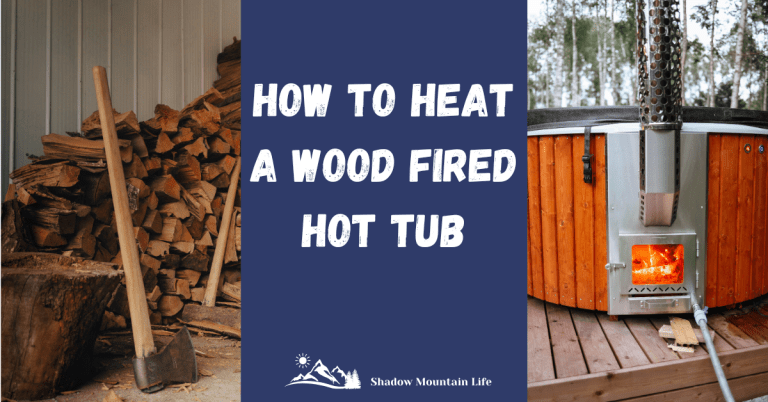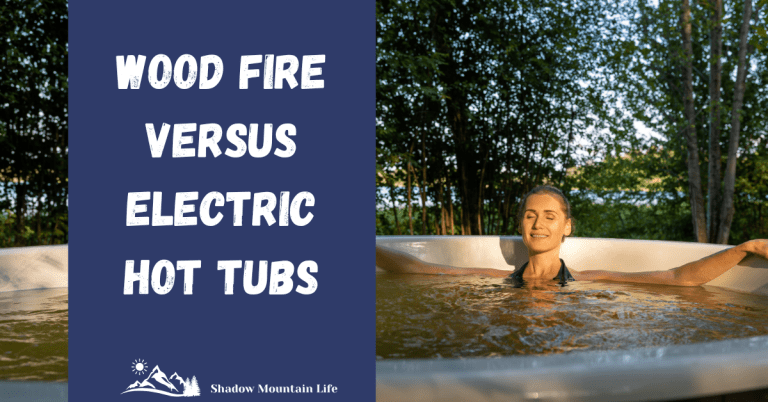How Wood Fired Hot Tubs Work: A Complete Guide to Natural Outdoor Soaking
Did you know that wood fired hot tubs can heat water to a cozy 104°F (40°C) using nothing but firewood and natural convection? Let’s take a look at how wood fired hot tubs work whether you’re considering purchasing one or just curious about the mechanics. I absolutely love these sustainable alternatives to traditional hot tub, and I think you will too!
Medical Disclaimer: We are not doctors. The health information in the article is for informational and educational purposes only. Please consult your doctor or other healthcare professional when making medical decisions.
Affiliate Disclaimer: We may make a commission if you purchase something through our links. Thank you!
Brand new to wood fire hot tubs? Check this article out for more information on getting started.
How Wood Fired Hot Tubs Work and Understanding the Basics
Fundamental Components of a Wood Fire Hot Tub
The main components are actually pretty simple: you’ve got the tub itself (usually made from gorgeous cedar or sturdy spruce), a firebox where the heat happens, and a chimney to vent the smoke. The setup reminds me of a cozy wood stove, just cleverly adapted to heat water instead of a room.
Types of Wood Fire Hot Tubs Available (Internal vs. External Heater)
I was surprised to find that there are actually two main types of wood fired hot tubs. You’ve got internal heater models, where the firebox sits right inside the tub (usually protected by a metal shield and a wood barrier), and external firebox models, where the heating system sits outside the tub. Both wood burning stove systems get the job done, and it’s really just a matter of preference and budget.
As seen below, Backcountry Recreation offer both types of wood stove hot tubs, an internal stove model as well as an external firebox model.
Overview of Different Materials Used
Cedar is normally used for most wood burning hot tubs. Some tubs also have a cedar interior, while others have a marine-grade aluminum or fiberglass interior. Cedar is absolutely amazing for these tubs as cedar naturally resists rot and has an incredible insulating property that helps keep the water warm longer. Plus, that signature cedar smell is just a bonus.
Comparison with Electric Hot Tubs
One thing that really surprised me when I first started learning about these tubs was how different they are from traditional electric hot tubs. No jets, no complicated control panel, no expensive electrical setup. Just pure, simple and straightforward as the water heats up through natural convection.
Don’t rush the initial heating process by stuffing the firebox full of wood. Build a fire and maintain steady, controlled heat for more efficiency. Plan for about 2-3 hours for the first heating session, depending on your water volume and outside temperature.
Temperature control is something you will want to develop a feel for. Keep a good thermometer handy and start reducing the fire when the water hits about 100°F (37.8°C), since it’ll continue heating a bit even after you ease up on the wood. This way, you’ll hit that perfect soaking temperature of 104°F (40°C) without overshooting.
The beauty of wood fired hot tubs is in their simplicity. No complex mechanics to break down, no expensive parts to replace, and virtually no electricity needed. Just you, some good firewood, and the satisfying process of heating your own soaking water.

The Heating Mechanism Explained
The heating mechanism is actually a beautiful example of simple physics in action. Picture this: you’ve got your firebox (either inside or outside the tub), and when you light that first piece of wood, you’re starting a process called thermosiphoning.
As the fire heats the water in or around the firebox, that water becomes less dense and naturally rises to the top of the tub. Meanwhile, the cooler water sinks to the bottom and gets pulled toward the heat source. The water is stirred and mixed naturally.
The heating time varies depending on a few factors. Starting with cold water, you’re typically looking at 2-3 hours to reach 104°F (40°C). But here’s what also affects that timeline: outside temperature (winter heating times are about longer), wind conditions (consider windbreaks), and most importantly, your fire management skills.
These tubs are actually pretty good at holding their temperature, especially cedar ones. Once you hit your target temp, you only need to add a log or two every hour to maintain it.
Seasoned hardwoods like oak and maple give the best heat-to-wood ratio and burn longer than softwoods like pine.
Start with a layer of small kindling (softwoods that burn hot and quick like pine work well here), then add a couple of medium oak or maple logs, and finally one larger log on top. This creates a nice coal bed that helps maintain consistent heat. Being strategic about your wood placement makes a huge difference in heating efficiency.
The real beauty of this heating mechanism is its reliability- because there’s virtually nothing that can break! Compare that to the time spent troubleshooting electric hot tub heaters and calling the repairman!
Water Circulation and Filtration Systems for Your Wood Burning Hot Tub
Natural Convection Current Explained
Natural convection works well in these tubs because as the water heats up near the firebox, it creates an amazing natural flow pattern. The hot water rises to the surface while cooler water sinks and gets drawn toward the heat source. I call it the “lazy river effect,” and once you see the gentle movement of leaves or flower petals on the surface, you’ll understand why.
While traditional hot tubs rely on electric pumps and complex filtration systems, wood fired tubs take a more minimalist approach. How do you keep the water clean without all that equipment?
Filtration Options and Pumps
The simplest filtration method is using a basic skimmer net daily (especially important if you don’t have a cover) – it takes literally two minutes and catches most debris before it can sink. For more thorough filtration, you can try a small solar-powered pump connected to a filter usually found at most pool stores. It’s just enough circulation to keep things crystal clear without compromising that peaceful, pump-free environment.
Water Quality Maintenance
One common misconception is that wood fired tubs need the same intense chemical treatment as traditional hot tubs. Since these tubs are typically drained and refilled more frequently, you can actually maintain water quality with gentler methods. Most wood fire hot tub companies will have their own recommendations and even products to naturally help keep your water clean like Ahh Natural or Blue Magic.
Remember though – even with natural circulation, regular water testing is important. Keep test strips handy and check your water chemistry about twice a week. This will help you know when it’s time for a fresh fill. Once you get into the routine, maintaining crystal clear water becomes second nature!
Setting Up Your Wood Fired Hot Tub
Site Preparation
First things first: site preparation is absolutely critical. Always start with a solid and level foundation – either a reinforced concrete pad or a properly prepared crushed stone base that’s at least 4 inches thick. Spending extra time getting this right saves so much headache later!
In your site selection process, don’t just think about the view (though that’s important too!), but also consider wind patterns, distance from your wood storage, and most importantly, drainage. Also, consider where your chimney will be and the distance and height of surrounding trees.
Installation Steps and Considerations
The actual installation process follows a pretty specific sequence:
1. Get your base 100% level – perfect level. Even a slight tilt can affect water depth and the natural circulation.
2. Position your tub and check access to the firebox. You want enough space to comfortably add wood without doing any awkward contortions.
3. Install the chimney with proper supports.
You’ll want at least 3 feet of clearance on all sides of your tub – more on the firebox side. This gives you room for maintenance and helps prevent any potential fire hazards.
Initial Heating and Filling Process
The initial hot tub fill takes longer than you might expect – we’re talking about 400-700 gallons depending on your tub size. Plan for about 45-60 minutes of fill time with standard garden hose pressure.
Safety
Safety features are non-negotiable in my book. Use proper railings and non-slip surfaces around the tub. Install good lighting too – you’d be surprised how many people forget about nighttime safety until they’re trying to add wood to the fire in the dark!
Remember those little extras that make a big difference: a good thermometer, a water testing kit, and basic cleaning supplies should all be part of your initial setup.

Maintaining Optimal Performance of Your Wood Fire Hot Tub
Recommended Firewood Types and Storage
Let’s start with the most important thing: firewood selection. Seasoned hardwoods are absolutely the way to go. Oak, maple, and birch are top choices because they burn hot and clean. Store your wood in a covered area about 20 feet from the tub, up off the ground on pallets. The wood needs to have a moisture content under 20% – you can grab an inexpensive moisture meter from any hardware store to check this.
Cleaning and Maintenance
Unlike traditional hot tubs that need a complex cocktail of chemicals, wood fired hot tubs don’t require a lot and are actually much simpler to maintain. Test your water twice a week using basic test strips and keep a log (super helpful for tracking patterns). If you are looking for eco-friendly water cleaners for your tub, Ahh Natural and Blue Magic are two products that are commonly used in wood burning hot tubs.
A simple cleaning schedule can look like this:
Daily: Quick skim with a net to remove any debris or keep covered.
Weekly: Wipe down the water line with a natural cleaner
Monthly: Deep clean the firebox and check the chimney for creosote buildup
Seasonally: Complete drain and clean, inspect all components, and treat the exterior wood with linseed oil.
Clean out the ashes after every 2-3 uses. Don’t let them build up, as they reduce heating efficiency. A good ash shovel and metal bucket are essential tools for this job. Eco-friendly tip- add the used ash to your garden or compost pile.
Winter maintenance deserves special mention because this is where a lot of folks get nervous. If you’re planning to use your tub year-round, you’ll need to be extra vigilant about preventing freezing. Keep a small fire going if you are using it regularly during freezing weather or drain the tub completely if you won’t be using it. You can also purchase a small stock tank heater to keep the water from freezing.
Temperature management becomes second nature once you get the hang of it. Maintaining a consistent temperature is much easier than letting it fluctuate wildly. Having a stack of pre-cut wood in different sizes helps immensely with fine-tuning the heat.
The chimney needs regular attention too. Every three months or so, do a thorough inspection and cleaning of the chimney system. A buildup of creosote can be dangerous, so this isn’t a maintenance task to skip. A proper chimney brush and basic inspection tools are worth their weight in gold.
Remember, preventative maintenance is so much easier than fixing problems after they develop. Take care of your wood fired hot tub, and it’ll provide years of wonderful soaking experiences.

Benefits and Considerations
Wood fired hot tubs have an incredibly low environmental impact. Unlike traditional electric hot tubs that constantly draw power, wood fired tubs use renewable fuel and minimal electricity. Plus, if you’re using locally sourced wood, you’re looking at a seriously small carbon footprint!
The initial investment for a wood fired hot tub typically runs between $4,000-$8,000 – not cheap, but operating costs can be dramatically lower than electric tubs. That’s not even counting the expensive chemical treatments traditional tubs need!
Because less chemicals are needed (or used at all) you should notice significantly less skin irritation compared to using a chemically treated tub. And there’s something therapeutic about the slight wood smoke aroma in the air.
These tubs require more hands-on attention than their electric counterparts. You can’t just press a button and come back to hot water. Plan to spend about 15-20 minutes getting the fire started and occasionally adding wood during a soaking session.
You may find that you enjoy the mindfulness aspect of tending the fire and watching the temperature rise as it creates a ritual that forces you to slow down. It’s not instant gratification like an electric tub – you need to plan ahead and be patient.
One unexpected benefit of heating the hot tub is the social aspect. The process of heating the tub naturally creates opportunities for conversation and connection. Friends arrive early to help with the fire, and there’s a shared anticipation as the water warms. It turns hot tub sessions into more meaningful gatherings rather than just quick dips.
Weather can definitely impact your experience. While these tubs work great in cold weather (some might say even better!), windy conditions can affect heating time and fire management. So, check the weather forecast and plan your soaking sessions accordingly. Having a good windbreak and proper chimney height makes a huge difference as well!
Integration with outdoor spaces is an important thing to consider. You may find that your wood fired hot tub becomes a beautiful focal point in your yard, almost like a piece of functional art. The natural materials and simple aesthetic complement any outdoor setting, unlike the plastic-heavy look of traditional electric model. By adding some native plants, LED light strings and seating, you can create a whole relaxation oasis around your tub.
Wood fired hot tubs represent a perfect blend of traditional craftsmanship and natural heating principles. They offer an eco-friendly, cost-effective way to enjoy outdoor soaking while staying connected to nature.

